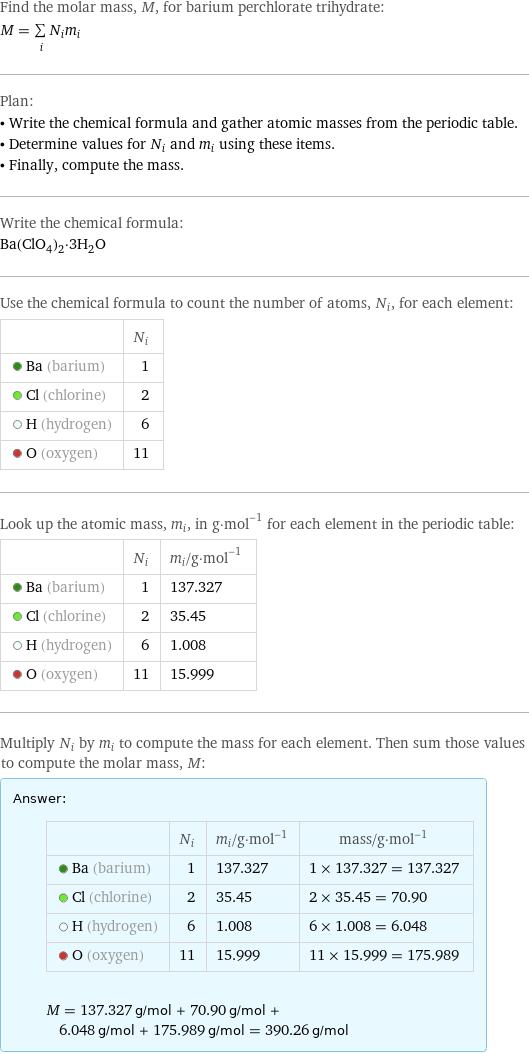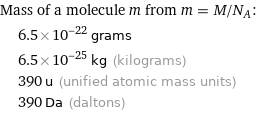Input interpretation

barium perchlorate trihydrate | molar mass
Result

Find the molar mass, M, for barium perchlorate trihydrate: M = sum _iN_im_i Plan: • Write the chemical formula and gather atomic masses from the periodic table. • Determine values for N_i and m_i using these items. • Finally, compute the mass. Write the chemical formula: Ba(ClO_4)_2·3H_2O Use the chemical formula to count the number of atoms, N_i, for each element: | N_i Ba (barium) | 1 Cl (chlorine) | 2 H (hydrogen) | 6 O (oxygen) | 11 Look up the atomic mass, m_i, in g·mol^(-1) for each element in the periodic table: | N_i | m_i/g·mol^(-1) Ba (barium) | 1 | 137.327 Cl (chlorine) | 2 | 35.45 H (hydrogen) | 6 | 1.008 O (oxygen) | 11 | 15.999 Multiply N_i by m_i to compute the mass for each element. Then sum those values to compute the molar mass, M: Answer: | | | N_i | m_i/g·mol^(-1) | mass/g·mol^(-1) Ba (barium) | 1 | 137.327 | 1 × 137.327 = 137.327 Cl (chlorine) | 2 | 35.45 | 2 × 35.45 = 70.90 H (hydrogen) | 6 | 1.008 | 6 × 1.008 = 6.048 O (oxygen) | 11 | 15.999 | 11 × 15.999 = 175.989 M = 137.327 g/mol + 70.90 g/mol + 6.048 g/mol + 175.989 g/mol = 390.26 g/mol
Unit conversion

0.39026 kg/mol (kilograms per mole)
Comparisons

≈ 0.54 × molar mass of fullerene ( ≈ 721 g/mol )

≈ 2 × molar mass of caffeine ( ≈ 194 g/mol )

≈ 6.7 × molar mass of sodium chloride ( ≈ 58 g/mol )
Corresponding quantities

Mass of a molecule m from m = M/N_A: | 6.5×10^-22 grams | 6.5×10^-25 kg (kilograms) | 390 u (unified atomic mass units) | 390 Da (daltons)

Relative molecular mass M_r from M_r = M_u/M: | 390